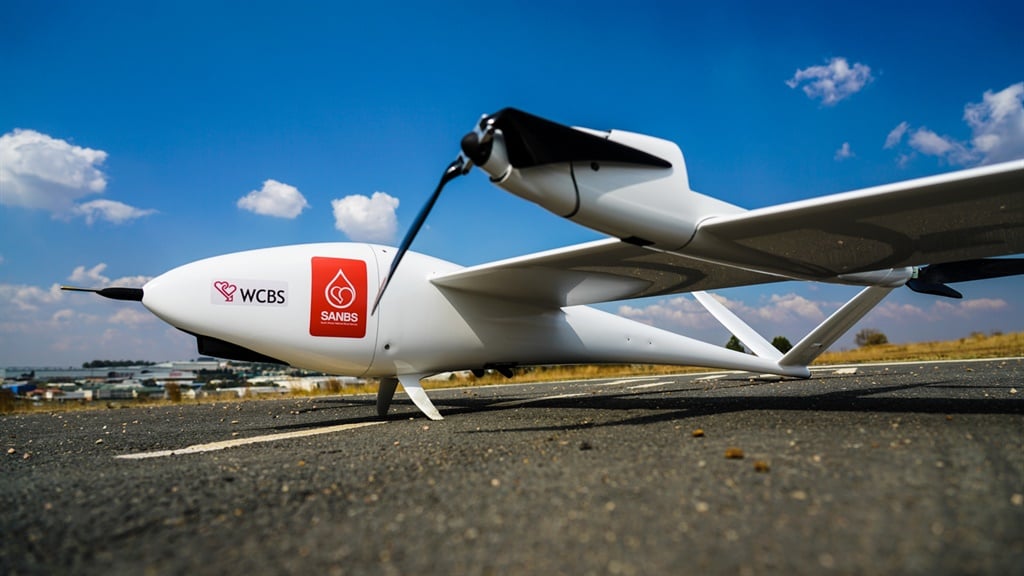
- The South African National Blood Service is set to start using drones to transport blood in the next few months.
- The initiative has been plagued with challenges over the last five years.
- Drones such as this could be a significant step forward in speeding up blood transport times in rural areas.
- For more stories, visit the Tech and Trends homepage.
The South African National Blood Service’s (SANBS) project to transport blood between two hospitals using drones is set to get under way in the next few months.
This comes after five years of challenges in the form of unfinished hospital construction, regulatory hurdles, and a lack of drone operators owing to the pregnancy of one of the operators, explained Kobus Strydom, the senior manager for business applications at the SANBS, who is involved with the project.
The project started in 2018, when SANBS began looking into the viability of transporting blood in South Africa using drones.
Strydom explained that the initiative aimed to address the long wait times for blood at hospitals, especially in rural areas where poor roads mean the time between the request and delivery of blood has been known to take as long as 18 hours.
Drones are capable of shortening this wait time, enabling the rapid transfer of blood between hospitals.
SANBS acquired two Tron drones, which are ordinarily used for surveillance but were modified for the project, and demonstrated the technology in 2019.
But, to date, no blood has been transferred using the drones, explained Strydom.
Challenges
There have been a variety of challenges that the project has had to overcome, he explained.
Chief among these was compliance with regulatory hurdles to get a licence to operate the drones from the South African Civil Aviation Authority (SACAA).
Strydom said:
In 2022, the project was awarded a remote operator’s certificate by the SACAA, meaning it was licensed to fly on a route between the Kopanong Provincial Hospital, and the Sebokeng Hospital, a distance of around 9km by air and 12km by road.
The Sebokeng Hospital has a blood bank and the Kopanong Hospital does not, explained Strydom.
One of the conditions for the awarding of the certificate is that two drone operators would be needed for the trips – one at the departing hospital and one at the arriving hospital. The controls would be handed over to the other pilot mid-flight.
This resulted in delays when one of the only two drone operators that were available took time off work following her pregnancy, explained Strydom.
He said that the drone operator returned in January 2023, but a further delay was caused by the unfinished construction of new hospital wards at Kopanong.
The health department spent R115 million to build more hospital wards at Kopanong, which were never completed.
READ MORE | Health dept blows R115m on incomplete hospital wards, DA calls it 'a monstrous waste of money'
Following this, a new acting CEO was appointed to the hospital meaning that a new approval document was required. This is currently being worked on, said Strydom.
“If they get that approval, we can go place our container and start flying.”
Future plans
Strydom acknowledged that the project between the two hospitals will not be that ground-breaking owing to the short distance that will be covered, but said that it could set the groundwork for the expansion of the project.
He said the goal of the project is to fly “where it makes a difference”.
He said that SANBS has already identified seven sites in KwaZulu-Natal where it wants the drones to operate and has looked at new higher-tech drones that could be used for the flights.
“It’s really the very rural sites that we want to fly [to].”
He said that in rural areas the quality of roads is poor, meaning that even short distances can take a long time when travelling by car.




 Publications
Publications
 Partners
Partners























